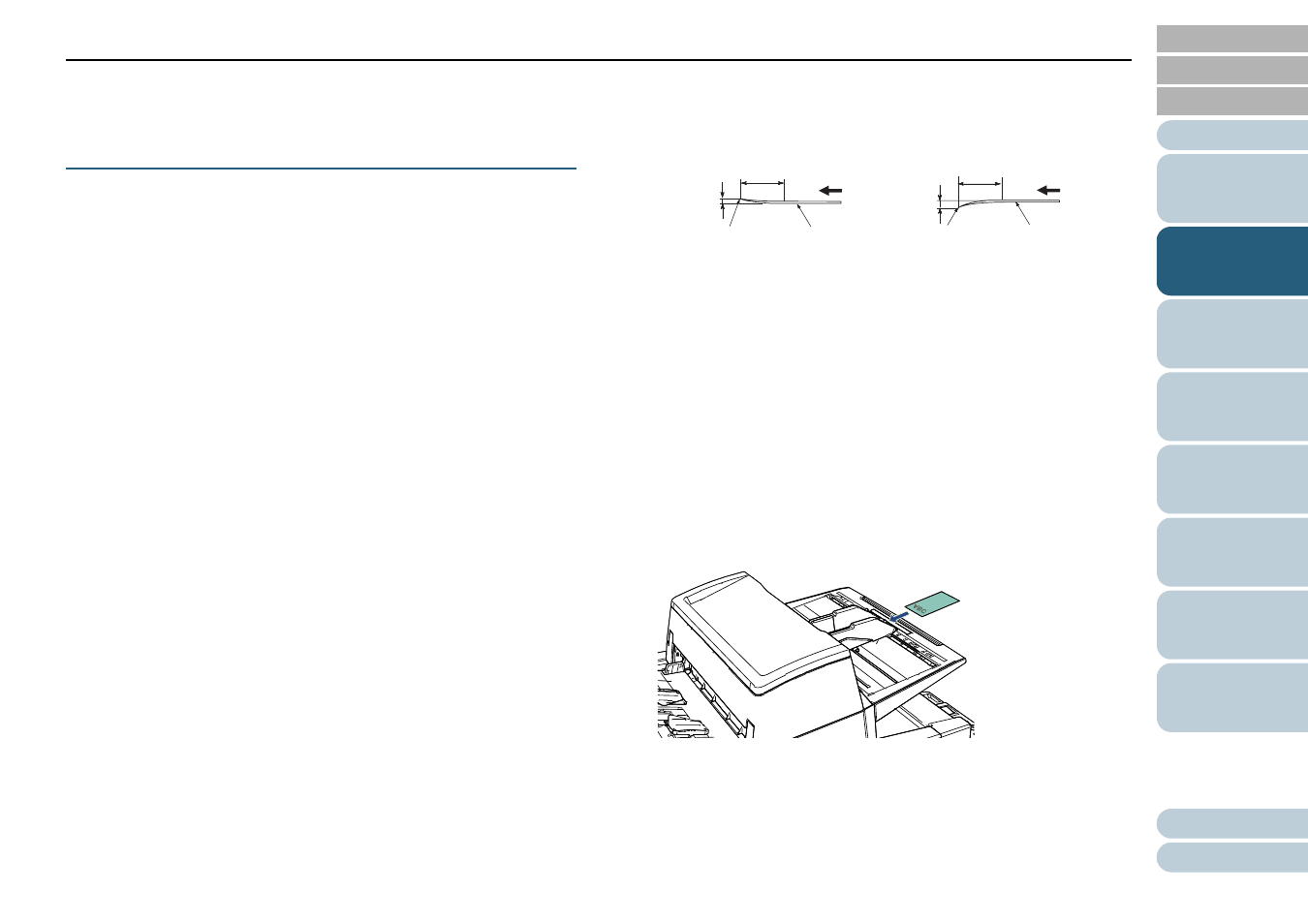Precautions, Index contents, Appendix glossary introduction top – Fujitsu Ricoh Fujitsu fi-7700 Document Scanner User Manual
Page 48

Chapter 2 How to Load Documents
48
Documents other than paper/plastic card such as fabric, metal foil
and OHP film
Important documents that must not be damaged or smeared
Precautions
Notes on the documents to be scanned
Depending on the documents to be scanned, take note of the following:
Since carbonless papers contain chemical substances that may harm
the rollers (such as a pick roller), take note of the following.
- Cleaning
If paper jams occur frequently, clean the brake roller and pick
roller.
For details, refer to
"Chapter 5 Daily Care" (page 104)
.
- Replacing the consumables
The life of the brake roller and pick roller may end sooner
compared to scanning wood-free paper.
When scanning wood containing papers, the life of the brake roller
and pick roller may end sooner compared to scanning wood-free
papers.
Brake roller and pick roller may be damaged when a photo/sticky note
on the document contacts these parts during scanning.
The surface of the document may be damaged when gloss papers
such as photographs are scanned.
The light of the LED may reflect brightly when gloss papers are
scanned.
When scanning semi-transparent documents, increase the brightness
for scanning in the scanner driver to avoid bleed-through.
When you scan documents written in lead pencil, make sure you
clean the rollers frequently. Otherwise, the rollers will be
contaminated which may leave black traces on the document or
cause feeding errors.
For details about cleaning, refer to
"Chapter 5 Daily Care" (page 104)
If multifeeds, pick errors, or paper jams occur frequently, refer to
.
When you scan documents with the ADF, all documents must be flat
on the leading edge. Make sure that curls on the leading edge of the
documents are kept within the following range:
Notes on plastic cards
When you scan plastic cards, take note of the following.
Make sure you use a card that contains the following specifications,
and check if the card can be fed before scanning it.
- Compliant with the ISO7810 ID-1 type
- Size: 85.6 × 53.98 mm
- Thickness: 1.4 mm or less
- Material: PVC (polyvinyl chloride) or PVCA (polyvinyl chloride
acetate)
Up to three plastic cards can be loaded in the ADF paper chute
(feeder).
Note that you can only load one card at a time if the plastic card is
embossed.
Plastic cards should be loaded vertically.
It is recommended that the card should be placed face-down in the
ADF paper chute.
Thick or rigid cards that are difficult to bend may be fed skewed.
Leading edge
Leading edge
Scanning side
Scanning side
Feed direction
Feed direction
30 mm (1.18 in.)
or more
30 mm (1.18 in.)
or more
3 mm
(0.12 in.)
or less
5 mm
(0.20 in.)
or less
